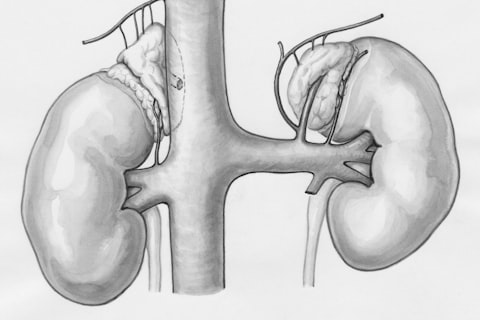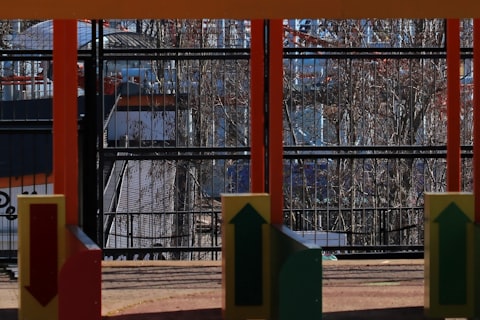The Precise Anatomy of the Kidney
Keywords
Kidneys Anatomy Nephrons Kidney Health Kidney Conditions
Introduction to Kidney Anatomy and Functions 📚
The kidneys are essential for filtering waste and maintaining various bodily functions. They are located below the rib cage on either side of the spine.
Detailed Kidney Structure 🔍
The kidneys' structure includes the renal cortex, medulla, and pelvis, each playing a specific role in urine production and filtration.
Figures
Kidney Structure Overview:
Images


Nephrons: The Functional Units 🧬
Nephrons are the microscopic structures within the kidneys that filter blood and produce urine.
Blood Supply: The Lifeline of the Kidneys 💉
The renal arteries and veins are crucial for delivering blood to the kidneys and removing filtered blood from them.
Kidney Functions: Filtration, Reabsorption, Secretion 💧
The kidneys perform vital functions, including filtering waste, reabsorbing nutrients, and secreting substances to maintain homeostasis.
Common Kidney Conditions 🚑
Conditions such as chronic kidney disease, kidney stones, and urinary tract infections can significantly impact kidney health and function.
Maintaining Kidney Health: A Vital Aspect of Well-being 🍏
Hydration, diet, and regular check-ups are key to preserving kidney health and preventing diseases.
Conclusion: The Essence of Kidney Awareness 🎓
Understanding kidney anatomy and functions is crucial for maintaining health. Prioritizing kidney care is essential for overall well-being.
Sources
The Precise Anatomy of the Kidney
The kidneys are vital organs that play a crucial role in maintaining the body's overall health and function. Understanding the precise anatomy of the kidney is essential for comprehending its functions and the importance of kidney health. In this article, we will explore the intricate structure of the kidneys, the role of nephrons as functional units, the blood supply to the kidneys, common kidney conditions, and the significance of maintaining kidney health.
I. Introduction
The kidneys are bean-shaped organs located on either side of the spine, below the rib cage. They are responsible for filtering waste products and excess fluids from the blood to form urine. Additionally, the kidneys help regulate blood pressure, electrolyte balance, and red blood cell production.
II. Structure of the Kidneys
Renal Cortex
The renal cortex is the outer region of the kidney that contains the glomeruli and renal tubules. It plays a vital role in the filtration of blood and the production of urine.
Renal Medulla
The renal medulla is the inner region of the kidney that consists of renal pyramids, which are responsible for the concentration of urine and the transportation of urine to the renal pelvis.
Renal Pelvis
The renal pelvis is a funnel-shaped structure that collects urine from the renal pyramids and transports it to the ureter for excretion from the body.
III. Nephrons: The Functional Units
Glomerulus
The glomerulus is a network of capillaries located within the Bowman's capsule. It is responsible for filtering blood and removing waste products to form urine.
Bowman's Capsule
The Bowman's capsule is a cup-like structure that surrounds the glomerulus and collects the filtrate produced during the initial stage of urine formation.
Renal Tubules
The renal tubules consist of the proximal convoluted tubule, loop of Henle, and distal convoluted tubule. They play a crucial role in reabsorbing essential substances, such as water and electrolytes, from the filtrate.
IV. Blood Supply to the Kidneys
Renal Arteries
The renal arteries supply oxygenated blood to the kidneys, allowing them to filter waste products and maintain proper function.
Renal Veins
The renal veins carry deoxygenated blood away from the kidneys and back to the heart for reoxygenation.
V. Functions of the Kidneys
Filtration
The kidneys filter waste products, toxins, and excess fluids from the blood to form urine.
Reabsorption
The kidneys reabsorb essential substances, such as water, electrolytes, and nutrients, back into the bloodstream to maintain proper balance.
Secretion
The kidneys secrete waste products and excess ions into the urine to eliminate them from the body.
VI. Common Kidney Conditions
Chronic Kidney Disease
Chronic kidney disease is a progressive condition that impairs kidney function over time, leading to a buildup of waste products in the blood.
Kidney Stones
Kidney stones are hard deposits that form in the kidneys and can cause severe pain and discomfort when passing through the urinary tract.
Urinary Tract Infections
Urinary tract infections are bacterial infections that can affect the kidneys, bladder, ureters, or urethra, leading to symptoms such as pain, burning during urination, and frequent urination.
VII. Importance of Kidney Health
Maintaining kidney health is essential for overall well-being. Hydration, a balanced diet, regular exercise, and avoiding smoking and excessive alcohol consumption can help prevent kidney disease and promote optimal kidney function.
VIII. Conclusion
In conclusion, the kidneys are vital organs with a complex anatomy and essential functions in the body. By understanding the precise anatomy of the kidneys, recognizing common kidney conditions, and prioritizing kidney health through lifestyle choices and regular check-ups, we can ensure that our kidneys function optimally and support our overall health and well-being. Remember, taking care of your kidneys is taking care of your health.


